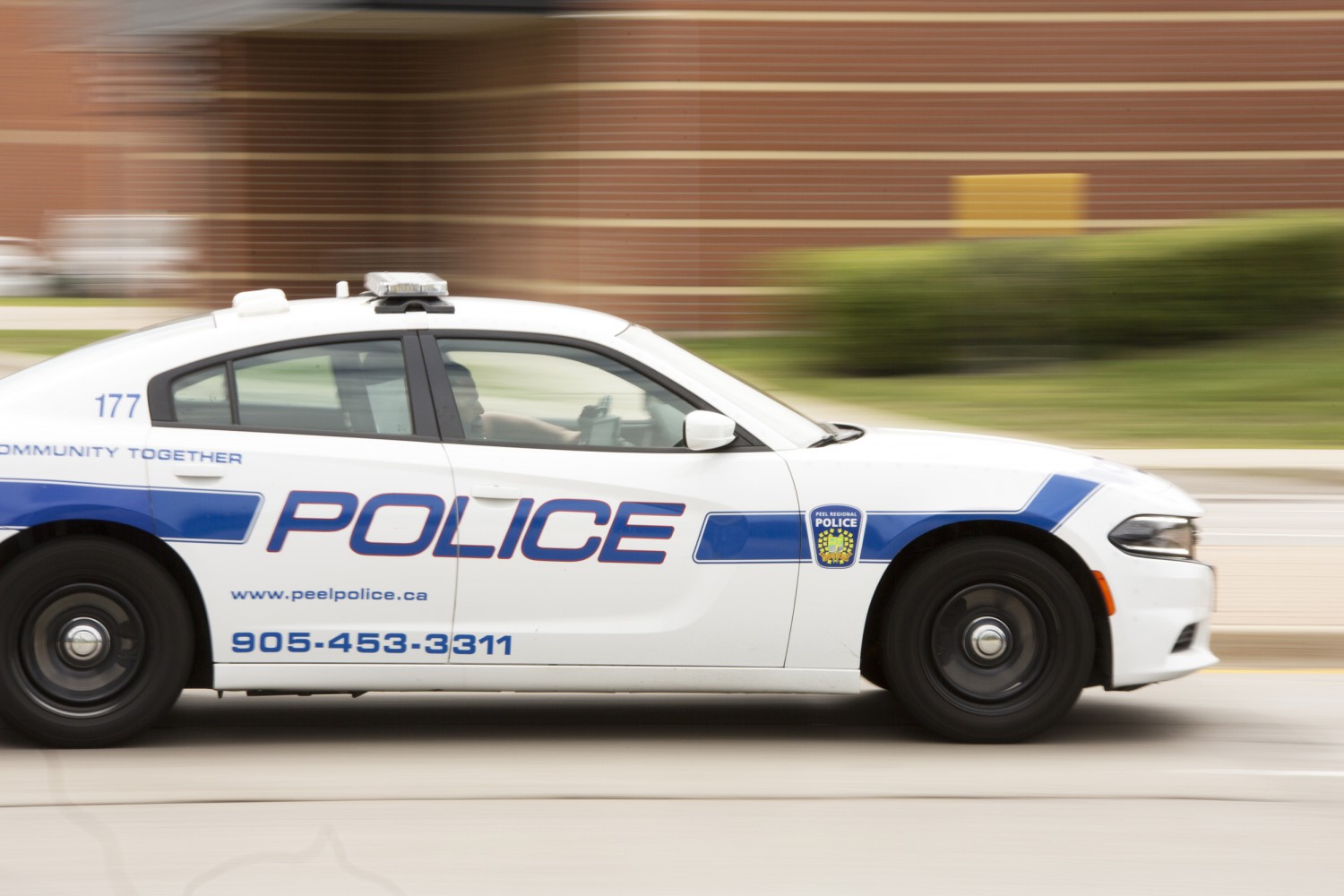
Peel police making headway against violent crime while struggling with other offences
The Peel Regional Police are working with a skeleton crew at the worst possible time. A surge in violent crime has hit the region, pulling a large portion of Peel’s officers into investigating homicides, shootings, and many other serious, high-profile crimes. In some cases, Peel’s platoons are operating with less than half of the officers they are allocated, and with the growing pressure from violent crime, something has to give.
At the start of a police officer’s shift, all members in the platoon gather for what is called “parade.” This meeting is an opportunity for the commanding officers to share the big cases of the day and assign tasks for the coming hours.
During his first two months on the job in late 2019, Chief Nishan Duraiappah spent time at many of these parades across the region. Speaking to councillors during budget time, Duraiappah explained how empty many of these parades looked. In a platoon that is meant to have 50 officers sharing the room at the start of a shift, there are only 22, many off work dealing with mental health and wellness issues, away on training, having been reassigned to other units, or simply enjoying time off. This leaves those on duty to deal with the surge in violent crime — the “emergent pressures” as Chief Duraiappah describes it — and other tasks are left for later. In November, the chief was forced to bolster the homicide and missing persons unit after three people were murdered in the first week of the month.
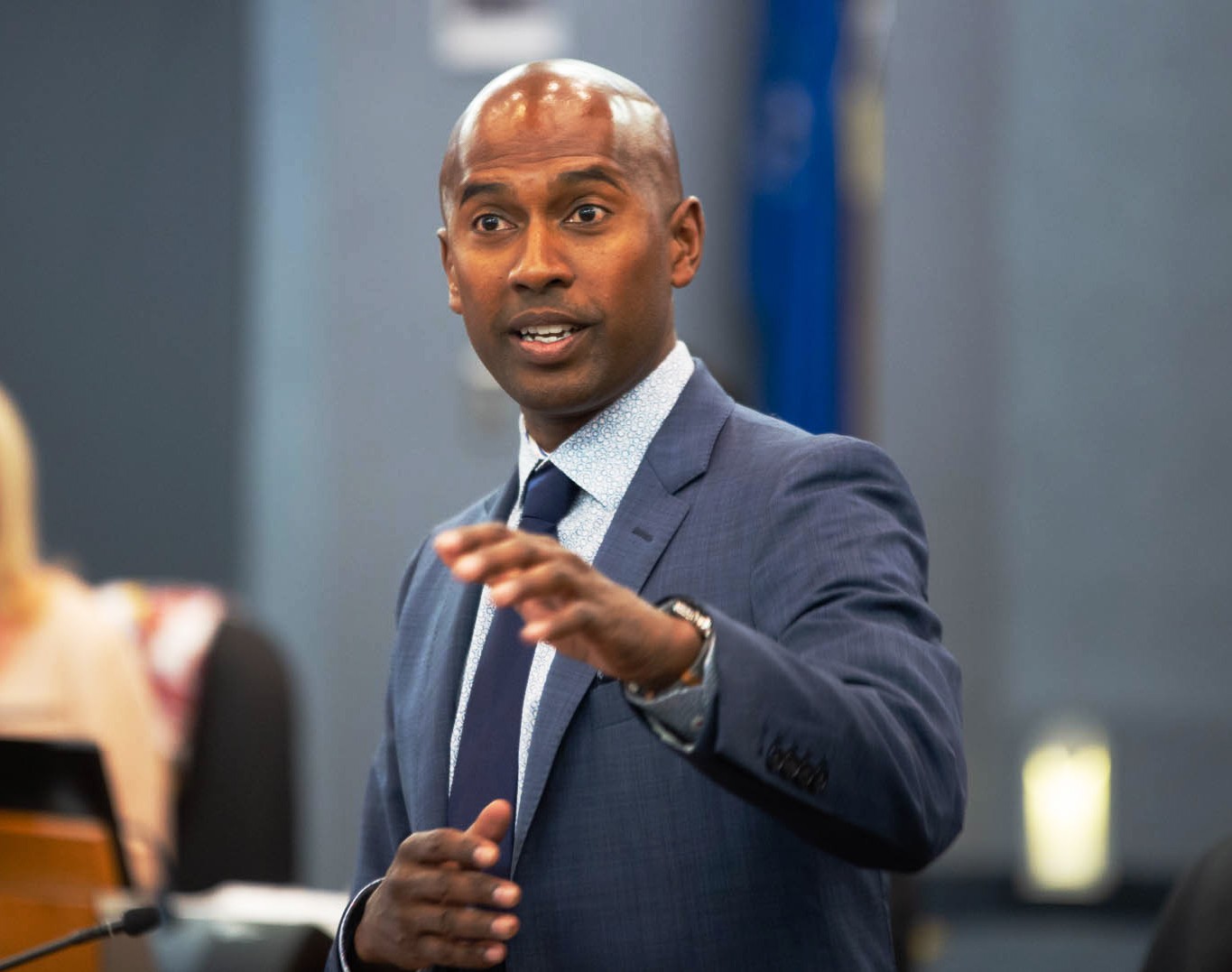
Chief Nishan Duraiappah
This has led to citizens waiting 3 - 4 days for a service delivery call to deal with a lesser crime, and other tasks like traffic enforcement are left to suffer.
“The road safety and the traffic safety does suffer because the officers are going to those dominant priority calls,” Chief Duraiappah told council in December.
An analysis completed by The Pointer shows just how true this statement is, and the effects on a police organization that, for years, has been forced to do more with less.
—
Over the last five years, rates of violent crime in Peel have shot up. Homicide and attempted murder have increased to the shock of residents, leaving the region’s police force scrambling.
Despite this well-documented and challenging rise in violent crime, police have maintained impressive solvency rates, bringing to justice the majority of those responsible for murder, attempted murder and various forms of assault. Yet, this impressive solvency rate for major crimes masks a problem: in order to keep solving murders, the police have been forced to put other, lower-priority calls, on the back burner.
Between 2014 and 2018, homicides increased 188.9 percent, from nine offences to 26. Attempted murder followed a similar pattern going from 11 cases in 2014 up to 18 in 2015 and peaking in 2018 at 39 attempted murders, an increase over five years of 255 percent.
These high profile crimes are always a priority for police organizations, and the Peel Regional Police maintained consistent solvency rates throughout this period due to more resources being allocated to address the growing numbers.
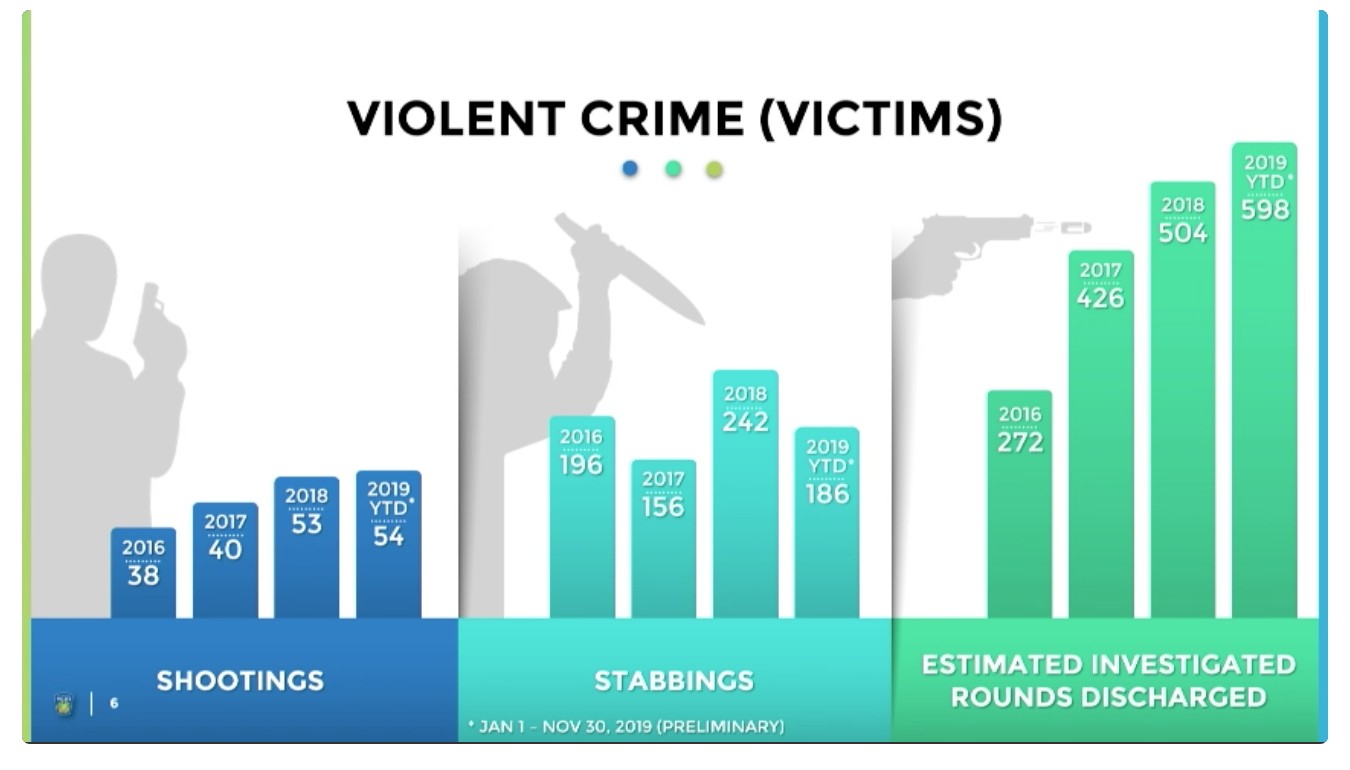
Between 2013 and 2018, despite the growing number of murders, the region’s homicide solvency rate actually increased 13 percentage points to 76.9 percent. The same effort was illustrated in the solvency rate for attempted murder, as the solvency rate for these crimes dropped by just 3.5 points. It appeared that Peel police were coping with everything being thrown at them.
However, with more officers dealing with violent crime, it meant fewer were available to deal with other forms of police work, for example, “crimes against property”. Despite Peel police being able to increase solvency rates for cases of arson and possession of property obtained by crime, the average rate of crimes solved under the property category worsened from 36.6 percent in 2013, to 27.7 percent in 2018.
As Chief Duraiappah indicated to council, traffic enforcement is another area that has suffered from a lack of officers available to patrol and conduct radar stops.
Between 2013 and 2018, as violent crime increased, traffic enforcement saw a corresponding drop. An increase in easy to administer tickets such as speeding and possession of an invalid permit masked a drop in other tickets and crimes that require officers to patrol. Careless driving offences dropped 49.8 percent, use of electronic devices fell by 53.8 percent and disobeying traffic lights fell by 48.6 percent. Finally, impaired driving offences were down 24.6 percent, dropping every single year. The decreasing numbers usually do not mean the problem is getting better, it's most often a reflection of fewer policing resources being deployed to enforce traffic and other laws.
A similar decrease is seen in drug offences, which dropped 47 percent between 2014 and 2018. The number of trafficking charges laid in 2013 sat at 591, dropping 30.6 percent by 2018 to 410. Possession charges plummeted 50 percent in the same time from 3,391 to 1,687.
The complexity of drug trafficking investigations aside, the solvency rate for these crimes is consistently high in Peel. However, the drop in drug offences does not align with a rise in violent crime fuelled by an increasing presence of gangs in the region, much of the violence potentially fuelled by turf wars over drug territory. Mayors Patrick Brown and Bonnie Crombie, both members of the Peel Police Services Board, have regularly spoken about this scary increase in violent gang activity; while the drop in drug charges suggests a lack of officer time, not a decrease in actual drug activity.
By comparison, in times of less frequent violent crime, the numbers show how police can turn their attention to other areas of the job.
Between 2013 and 2014, there was a drop in especially brutal crimes in Peel. Referred to in the Peel Regional Police statistics as “crimes against persons,” these include murder, attempted murder and assaults. Between 2013-14, homicide dropped, attempted murder stayed consistent, sexual violations ticked up by 10 offences and non-sexual assults dropped from 4,157 to 3,872. As these headline crimes dropped a little, solve rates stayed fairly steady. Homicide went from a 63.6 percent solve rate to 111.1 percent (this figure can be above 100 percent if homicides from previous years are solved), attempted murder jumped from 72.7 percent solved in 2013 to 90.9 percent the next year. Sexual violations saw a 7 percent drop in the solve rate, while solvency for general assault dropped 3 points to 87.8 percent.
In the background, the solve rate for car theft almost doubled, jumping from 12.4 percent to 24.3 percent. Despite an increase in the number of thefts under $5,000 from 11,040 to 11,124, the solve rate stayed almost constant, dipping marginally from 39.1 to 38.3 percent. The number of drug possession charges stayed consistent at 3,391, while drug trafficking, production and distribution charges also remained similar.
On the roads, impaired driving offences dropped by 125, while dangerous operation charges increased by 11 offences. Seat belt infractions under the Highway Traffic Act increased 7.25 percent, while charges for using electronic devices also increased from 6,113 to 6,349.
This shows that, generally, as major crime stayed constant and even reduced a fraction, officers were freed up to work in the community. They were given the time to spot drivers on their cell phones, time to investigate properly when a car was stolen and the resources required to look into drug trafficking throughout the region.
The large dip in solvency rates and enforcement of less high profile crimes now, suggests the Peel Regional Police have been forced to make difficult decisions, which has left them unprepared to deal with their current workload.
Though solving crimes against persons is an obvious priority for the service, the inability to allocate resources to other areas can lead to residents feeling unsafe and allowing non-violent elements of organized crime to flourish in the background. In its attempt to solve the biggest of crimes, Peel police could inadvertently be making the region significantly less safe in some ways.
Take traffic enforcement for example, while the number of violations has dropped in recent years, the deaths from motor vehicle collisions has increased from 25 in 2012 to 36 in 2018, the largest jump being in Brampton where deaths increased from 10 in 2012 to 22 in 2018.
Pedestrian deaths have also spiked, doubling from 9 in 2012 to 18 in 2018.
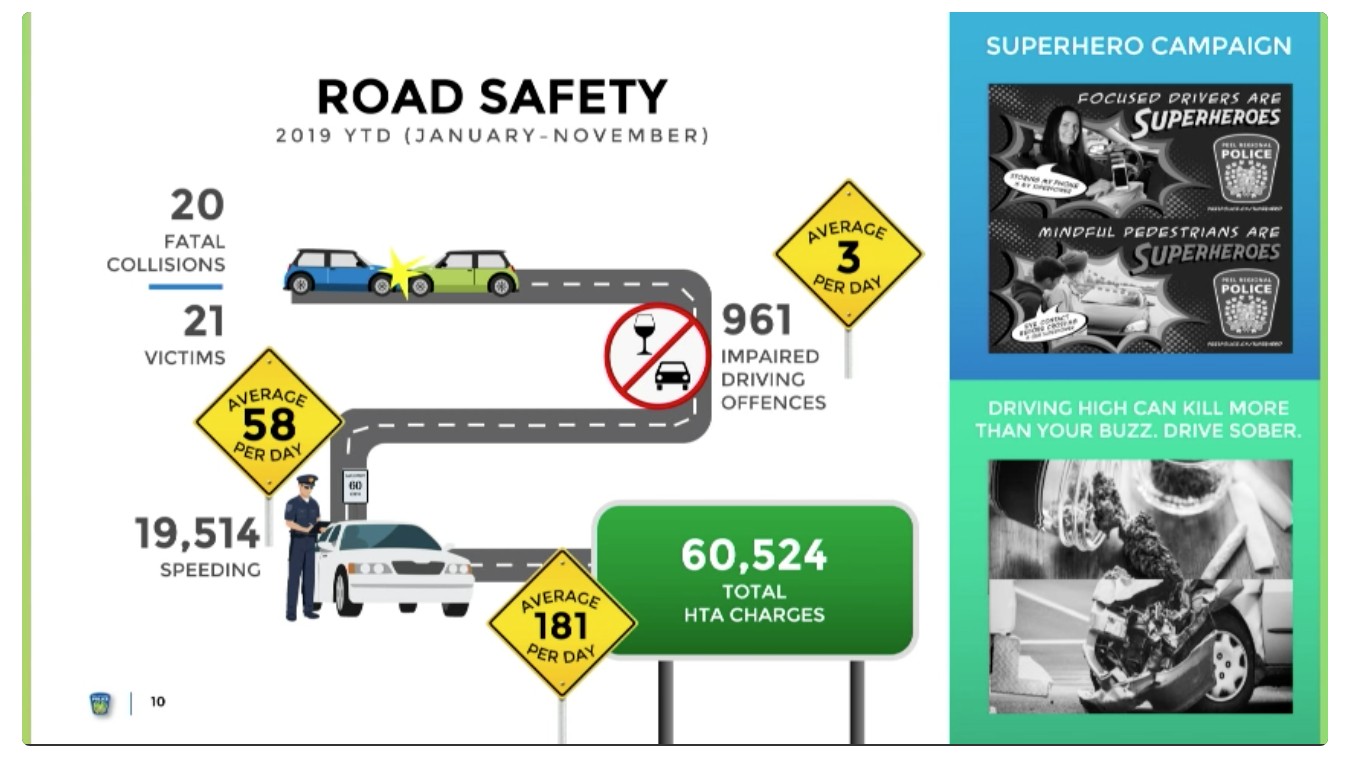
While motor vehicle collisions will continue in all cities despite any level of police presence, more officers on the street conducting speed traps, handing out tickets and providing education, all can work to force people to slow down and reduce the deaths on local roads.
Currently, it appears Peel police simply don’t have the resources to carry out the needed enforcement while grappling with the surge in violent crime.
For Chief Duraiappah, it was a no brainer that for the 2020 budget, the force needed more officers. He asked for 35 more, 27 officers for frontline work, and eight others for various tasks like forensics — to assist with the complex homicide and other violent crime investigations — one for case management and others for investigative intelligence.
“I don’t even know if that will get me to break even to be honest with you,” the chief told council in December.
Deputy Chief Marc Andrews told The Pointer the region’s police force was working on innovative solutions to allow them to continue to bring criminals in the region to justice. “There is no one answer to solving all crime,” he said in a statement. “However, we have a commitment to community engagement and working with our community partners and partner agencies to bring a positive impact to Peel Region.”
Programs PRP run for community engagement include Community Mobilization, School Resource Officers, strategic tactical enforcement policing and crisis outreach work. Beginning on Monday (January 13), the force will also partner with Canadian Mental Health Association (CMHA) to launch a Mobile Crisis Rapid Response Team.
“Our ability to use our resources provides us room to increase these efforts,” Andrews added. “It is through these types of programs that we grow towards our goal for a safer community.”
The additional officers came as part of the budget ask that was 5.4 percent — $22.7 million — more than the year before and the second straight year with an increase of 5 percent or more to the Peel Regional Police budget.
The ask — which was eventually approved by council following heated discussions — represents a $445.7 million operating budget, the lion’s share of which (approximately 94 percent) is for salaries and benefits for officers and staff.

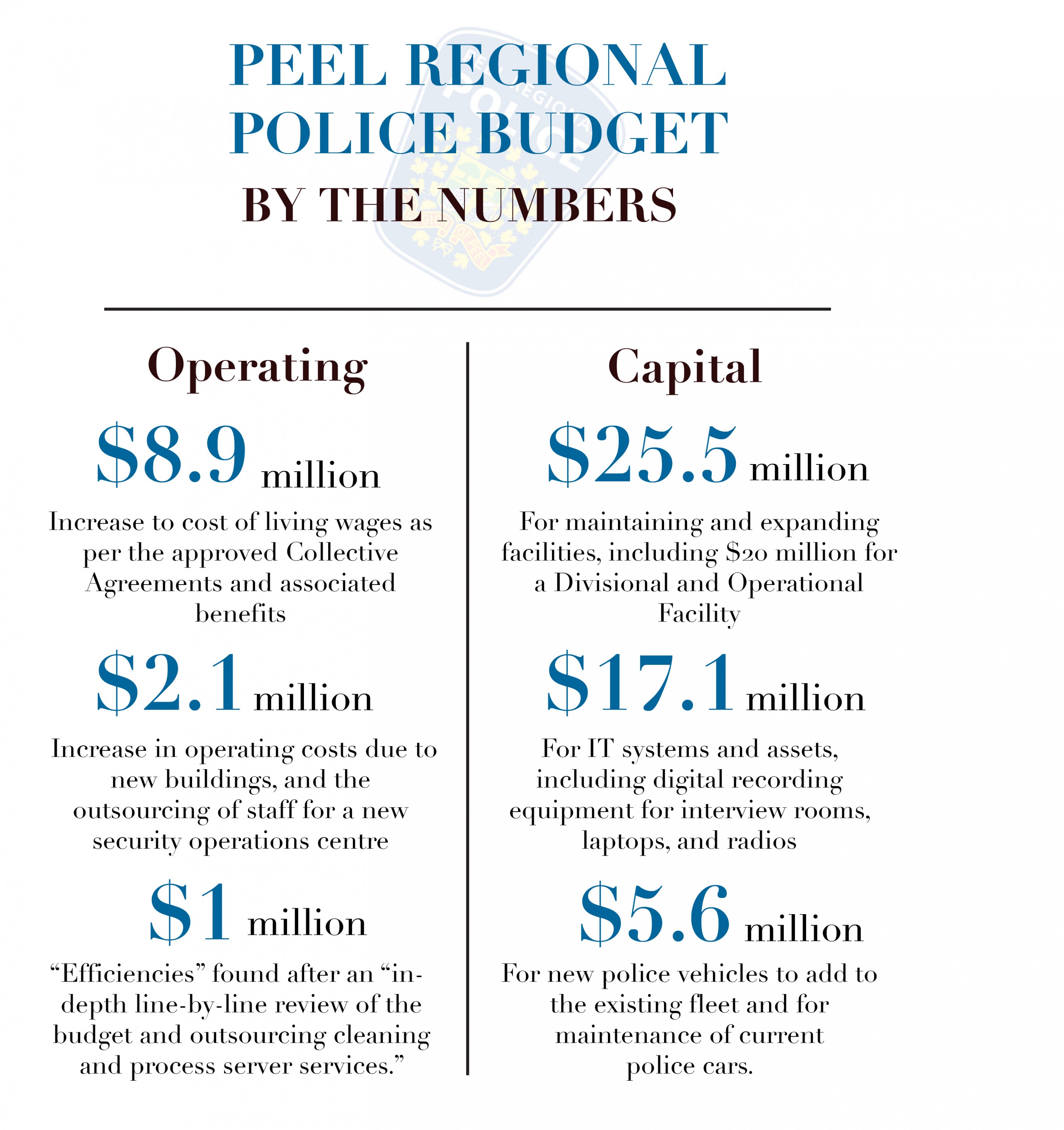
A close glance at how police salaries have increased in recent years raises serious questions about how efficiently Peel police are deploying their resources.
In Peel, where there are 140.5 officers for every 100,000 residents (compared to 161.1 in Calgary or 195.6 in Vancouver and the national average of about 188), more officers are needed to police the growing population. However, with such a large portion of the entire police budget being dedicated to salaries, unless the region is set to approve large increases in the years ahead, a more efficient way must be found to bring in more bodies, otherwise the more unpopular route could be taken, which is to reduce or freeze salaries.
The move would not be completely unprecedented as, in July 2018, shortly after being elected at Queen’s Park, Premier Doug Ford implemented a wage freeze for public service managers and initiated a review of executive and management compensation in order to try and reduce government spending. This freeze did not include essential frontline services like police and corrections officers.
A first-class constable with Peel police, for example, will earn about $100,500 (2019), after completing high school, police college training and the recommended 36 months of service; and as much as $117,500 including top-ups such as retention pay and the top “investigative premium”. This figure does not include income such as off-duty pay and overtime. By comparison, an RCMP constable, after completing training and 36 months of service, will earn $86,110, before any additional pay for incentives and overtime.
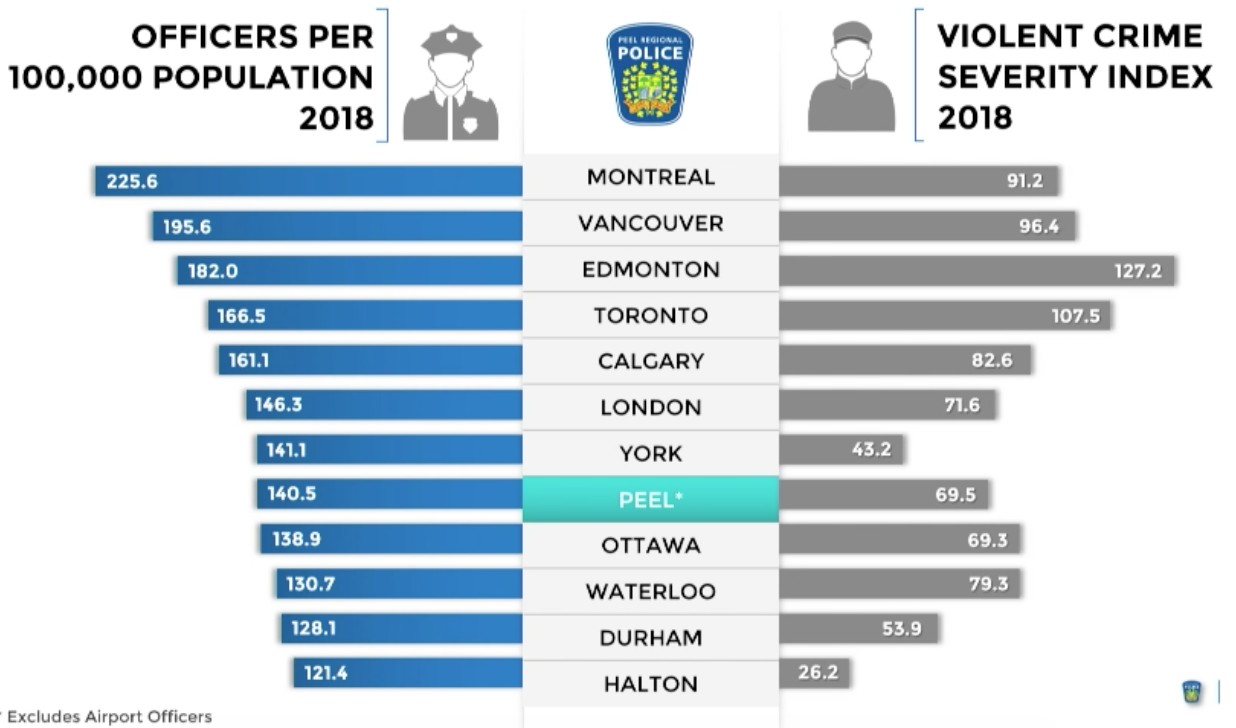
Peel police are on par with surrounding jurisdictions when it comes to salaries. In Durham, a first class constable will earn $98,167 (2018) and the York Regional Police offer $100,421 for the same position. These numbers are part of a trend in Ontario that has seen police salaries increase sharply in recent years under renewed collective agreements that use other forces as benchmarks, so salaries rise in tandem as Ontario forces point to each other to justify steep increases. Police boards in York and Toronto have said the labour cost increases witnessed over the past two decades are unsustainable, with budgets being spent on increasingly expensive police officers, instead of hiring additional officers or investing in modern crime fighting capabilities. An illustration of this is the fact that Peel’s police budget has increased by about 70 percent (triple the rate of inflation) in a decade, from $290 million in 2010 to $490 million in 2020, yet the number of officers has not kept up with growth. With budgets being spent to give existing officers more and more money, instead of hiring enough new officers, something will have to change for adequate policing resources to be deployed toward all areas of crime.
As the budget shows, once salaries and benefits for existing officers are accounted for, there isn’t much funding leftover for anything else.
According to the 2018 Ontario public salary disclosure (commonly called the sunshine list) which includes provincial employees who make $100,000 or more, dozens of Peel police constables earned more than $120,000 with some who were paid more than $150,000.
Chief Duraiappah has demonstrated his awareness of this unsustainable practice. In the summer of 2019, initial plans were in place for the hiring of 55 additional officers. He reduced that number to 35 and instead put money into hiring civilian positions. This is a new trend in policing that can bring in bodies and expertise for less cost than hiring new constables.
“At his presentation to regional council and to the Police Services Board, the chief made a compelling case for additional resources,” Crombie, who led her city’s call for the police to sharpen their budget pen, told The Pointer. “The force is stretched thin and [an] additional 35 officers and [more] resources are needed [...] My council felt strongly that another look at the budget would be beneficial and I agreed, which is why I voted to send it back to the board for another look. Having reviewed the budget again, I and the board remain committed to the recommendations as provided by the chief.”
“While I am always on the lookout for savings and efficiencies, I am not willing to jeopardize safety by cutting the number of officers,” she added. “Some councillors may be prepared to do that, but I am not.”
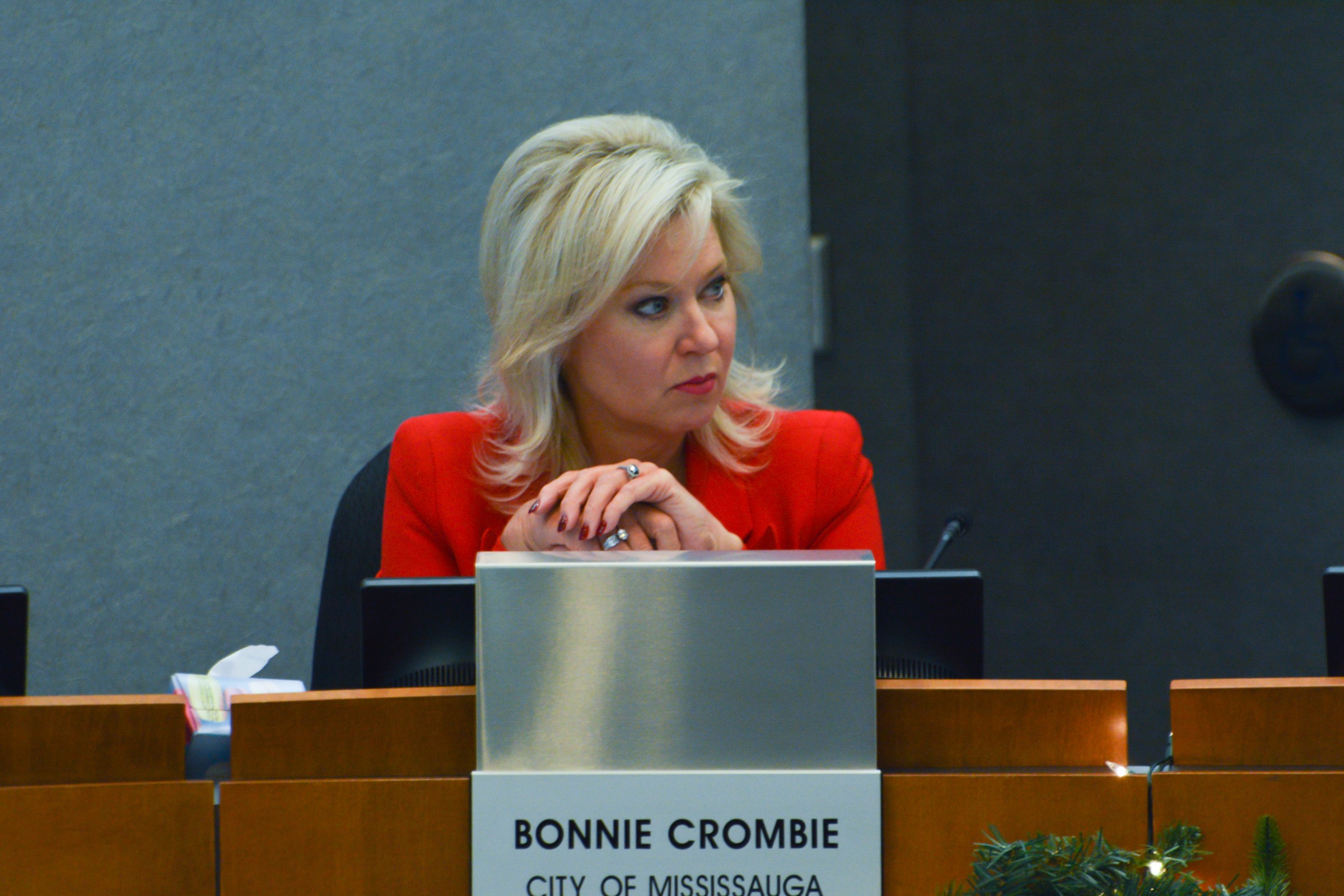
Mayor Bonnie Crombie
Despite repeated asks, Crombie did not address The Pointer’s questions about the ongoing impacts of Peel police being unable to address all aspects of crime in the region. Numbers have shown there is less enforcement and lower solvency rates of lesser crimes, which could be impacting overall community safety.
Brampton regional councillor Michael Palleschi, who advocated strongly in favour of leaving the police budget unchanged, said that growing demands in the region justified police budget increases. “Police services are essential to the safety and security of all persons and property in Peel,” he told The Pointer. “There is an increase in demand to address community safety and workload pressures resulting from growth within the Region.”
Palleschi also did not choose to address The Pointer’s questions in regards to resource allocation and the dipping enforcement and solvency numbers for certain types of offences.
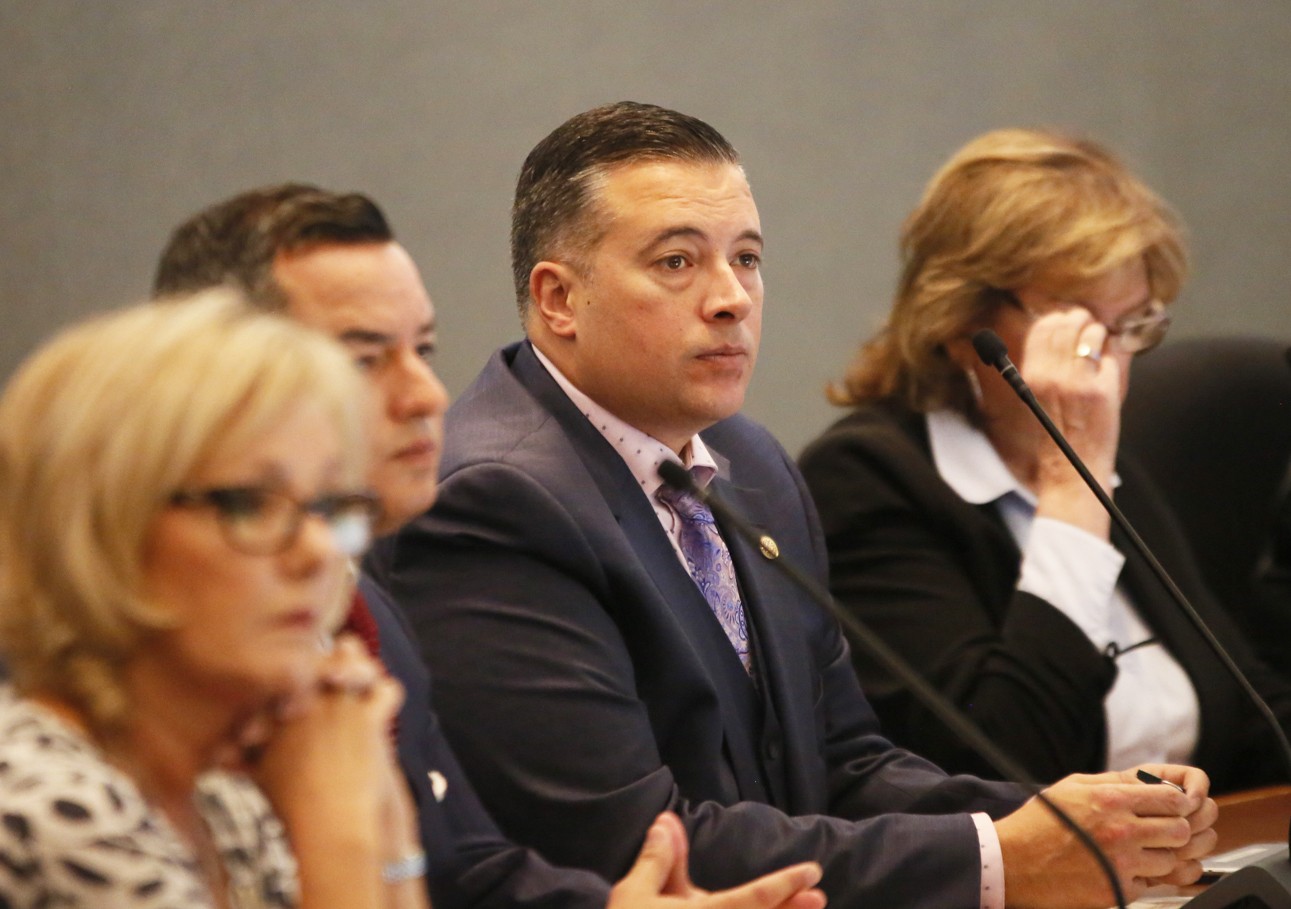
Councillor Michael Palleschi
Despite the 35 new officers being hired this year, Chief Duraiappah admitted that this will not lead to a significantly higher police presence in the community, essentially only resulting in one more officer per shift.
“It does allow the rest of the team that the individual gets added to, to do more and be more present,” he says. “Part of my responsibility is to make sure I have the right amount [of officers] in those areas doing the right amount of work.”
With trends for 2019 suggesting Peel was on par with the violent crime numbers seen in 2018 — homicides and shootings in particular — it means the chief will need to find a way to balance this new reality of violence with other policing responsibilities.
These community level interactions can make all the difference for the community.
“It’s the people’s perceived sense of safety, or people’s perceived sense of our investment, which is almost more impactful than the raw numbers sometimes,” Chief Duraiappah says.
Email: [email protected]
Twitter: @isaaccallan
Tel: 647-561-4879
Email: [email protected]
Twitter: @JoeljWittnebel
Submit a correction about this story


